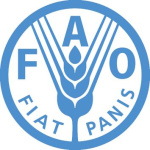- Industry: Agriculture
- Number of terms: 87409
- Number of blossaries: 0
- Company Profile:
Established in October 1945 with the objective of eliminating hunger and improving nutrition and standards of living by increasing agricultural productivity, FAO coordinates the efforts of governments and technical agencies in programs for developing agriculture, forestry, fisheries, and land and ...
A technique that identifies overlapping cloned DNA fragments that form one continuous segment of a chromosome. These fragments can be generated either by random shearing or by partial digestion with a four-base-pair cutter such as <i>Sau</i>3A. A series of colony hybridizations is then carried out, starting with some cloned fragment which has already been identified and which is known to be in the region encompassed by the overlapping clones. This identified fragment is used as a probe to pick out clones containing adjacent sequences. These are then used as probes themselves to identify clones carrying sequences adjacent to them and so on. At each round of hybridization one "walks" further along the chromosome from the initial fragment.
Industry:Biotechnology
A technique that separates charged molecules - such as DNA, RNA or protein - on the basis of relative migration in an appropriate matrix (such as agarose gel or polyacrylamide gel) subjected to an electric field.
Industry:Biotechnology
A technique that uses a nucleic acid probe to identify a bacterial colony with a vector carrying a specific cloned gene or genes.
Industry:Biotechnology
A technique to change one or more specific nucleotides within a cloned gene in order to create an altered form of a protein with one or more specific amino acid changes. a.k.a. oligonucleotide-directed mutagenesis; oligonucleotide-directed site-specific mutagenesis.
Industry:Biotechnology
A technique to distinguish between two major bacterial groups, based on stain retention by their cell walls. Bacteria are heat-fixed, then stained with crystal violet, followed by iodine solution, and then rinsed with alcohol or acetone. Gram-positive bacteria are stained bright purple, while Gram-negative bacteria are decolourized.
Industry:Biotechnology
A technique used to analyse chromosome-pairing relationships.
Industry:Biotechnology
A technique used to sort cells or other biological materials by means of flow through apertures of defined size or by laser sorting.
Industry:Biotechnology
A technique using single, short (usually 10-mer) synthetic oligonucleotide primers for PCR. The primer, whose sequence has been chosen at random, initiates replication at its complementary sites on the DNA, producing fragments up to about 2 kb long, which can be separated by electrophoresis and stained with ethidium bromide. A primer can exhibit polymorphism between individuals, and polymorphic fragments can be used as markers.
Industry:Biotechnology
A technology by which animals are created by cloning a single diploid somatic cell. It involves taking a single diploid cell from a culture of cells, and inserting it into an enucleated ovum, i.e., an ovum from which the haploid nucleus has been removed. The resultant diploid ovum develops into an embryo that is placed in a recipient female, which gives birth to the cloned animal in the normal manner. Note that the term is somewhat of a misnomer, since it is a whole cell that is transferred, not just the nucleus.
Industry:Biotechnology
A technology involving collection of immature ova from young animals, <i>in vitro</i> maturation of those ova, <i>in vitro</i> fertilization, and then transfer of the resultant embryos into recipient females. A method of achieving rapid generation turnover.
Industry:Biotechnology
